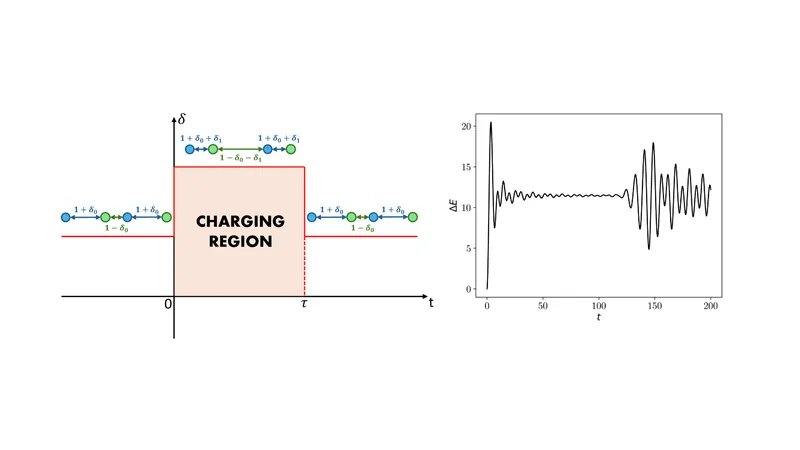
Revolutionary Spin Quantum Battery Charges Without External Fields - A Game Changer for Energy Storage!
2024-11-30
Author: Daniel
Introduction
In a significant breakthrough for energy storage technology, researchers at the University of Genova have introduced an innovative type of quantum battery that can be charged without the need for external fields. This exciting development comes as part of a growing interest in creating alternative energy storage systems based on the principles of quantum mechanics.
Key Features of the Spin Quantum Battery
Published recently in *Physical Review Letters*, this new spin quantum battery takes advantage of the spin properties of particles, which enables it to store and release energy far more efficiently than traditional batteries. Dario Ferraro, senior author of the paper, expressed his hopes for the research, stating that this could revolutionize energy storage solutions as we know them.
Research Methodology
Working alongside Ferraro, researcher Niccolò Traverso Ziani focused on analytically solvable quantum spin chains, ultimately leading to their innovative approach. The team’s efforts to manipulate the interactions between clusters of half-spins resulted in a system able to retain energy more stably than previously possible. “By shifting one chain with respect to the other, we can trap energy in ways that were not achievable with conventional designs,” Ferraro explained, highlighting the unique mechanism driving their new battery's functionality.
Charging Method
One of the most notable advancements of this spin quantum battery lies in its charging method. Unlike other quantum battery designs, it does not depend on external influences, allowing for more flexibility and robustness in real-time battery management. This discovery could herald a new era for quantum batteries, enabling them to be built using neutral atoms, which are already pivotal in the development of large-scale quantum computers.
Initial Results
Initial tests of this spin quantum battery have shown promising results, indicating that the newly developed charging protocol boasts reliability and does not necessitate high precision during operation. This reliability could lead to the advent of high-performance solid-state quantum batteries, catering to various use cases in energy consumption, renewable sources, and advanced electronic devices.
Future Research Directions
The research team does not plan to stop here, as they are now investigating how different environmental factors—including temperature and long-range interactions—affect the charging process of quantum batteries like the Ising model. Ferraro added, “Our ultimate aim is to devise a universal framework capable of evaluating multiple systems to determine their viability as quantum batteries.”
Conclusion
As the push for more efficient energy storage solutions intensifies, the implications of this groundbreaking research could be monumental, potentially leading to safer, faster-charging batteries that could change the electrical infrastructure landscape.
Stay tuned for the latest updates on this revolutionary development, as it promises to reshape the future of energy consumption and pave the way for advanced technological applications!



 Brasil (PT)
Brasil (PT)
 Canada (EN)
Canada (EN)
 Chile (ES)
Chile (ES)
 España (ES)
España (ES)
 France (FR)
France (FR)
 Hong Kong (EN)
Hong Kong (EN)
 Italia (IT)
Italia (IT)
 日本 (JA)
日本 (JA)
 Magyarország (HU)
Magyarország (HU)
 Norge (NO)
Norge (NO)
 Polska (PL)
Polska (PL)
 Schweiz (DE)
Schweiz (DE)
 Singapore (EN)
Singapore (EN)
 Sverige (SV)
Sverige (SV)
 Suomi (FI)
Suomi (FI)
 Türkiye (TR)
Türkiye (TR)